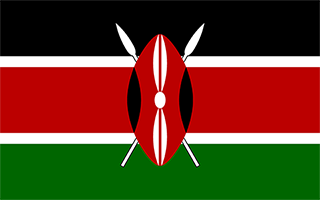Facts and Data
Webpages:
Official Unesco Page
Sibloi National Park (Kenya Wildlife Service)
Protectedplanet.net
Basis Data:
Unesco World heritage since: 1997
Size of heritage: 161,485 ha
Coordinates:
Longitude: 36,504°
Latitude: 3,051°
Summary
The most saline of Africa's large lakes, Turkana is an outstanding laboratory for the study of plant and animal communities. The three National Parks serve as a stopover for migrant waterfowl and are major breeding grounds for the Nile crocodile, hippopotamus and a variety of venomous snakes. The Koobi Fora deposits, rich in mammalian, molluscan and other fossil remains, have contributed more to the understanding of paleo-environments than any other site on the continent.
Location on Map
Show bigger map on Openstreetmap
Protection and Management Requirements of the UNESCO World Heritage Site in Kenya (N3 3 4.7 E36 30 13.2)
The UNESCO World Heritage site located in Kenya, at coordinates N3 3 4.7 E36 30 13.2, is a place of immense cultural and natural significance. This site is known for its rich history, diverse ecosystems, and unique wildlife. To ensure its preservation for future generations, the site has specific protection and management requirements in place.
History of the Heritage Site
The heritage site in Kenya has a long and fascinating history. It is home to several archaeological sites that provide evidence of human habitation dating back thousands of years. These sites have yielded artifacts and fossils that shed light on the early human civilizations that once thrived in the region.
Furthermore, the site played a crucial role in the development of human evolution. It is in this area that some of the earliest hominid fossils were discovered, including those of Homo habilis and Homo erectus. These findings have significantly contributed to our understanding of human evolution and have placed the site at the forefront of paleoanthropological research.
Current State and Significance
The UNESCO World Heritage site in Kenya is of immense importance due to its cultural and natural significance. The area is home to a diverse range of ecosystems, including savannahs, forests, and wetlands. These ecosystems support a wide variety of plant and animal species, many of which are endemic to the region.
One of the most iconic features of the site is its wildlife. It is home to numerous species, including elephants, lions, giraffes, zebras, and rhinoceroses. The site's rich biodiversity attracts tourists from around the world, contributing to the local economy and promoting conservation efforts.
Protection and Management Requirements
To ensure the preservation of this invaluable heritage site, specific protection and management requirements have been implemented. These requirements aim to safeguard the site's cultural and natural values while promoting sustainable development and tourism.
Firstly, the site is legally protected under national laws and regulations. This ensures that any activities within the site, such as construction or resource extraction, are carefully regulated and monitored to minimize their impact on the environment and cultural heritage.
Additionally, the site has a comprehensive management plan in place. This plan outlines strategies for conservation, research, and sustainable tourism. It also includes measures to involve local communities in the management and decision-making processes, ensuring their active participation and benefiting from the site's conservation efforts.
Furthermore, the site receives support from international organizations, such as UNESCO and various conservation NGOs. These organizations provide technical expertise, funding, and capacity-building initiatives to enhance the site's protection and management efforts.
In conclusion, the UNESCO World Heritage site in Kenya, located at coordinates N3 3 4.7 E36 30 13.2, is a place of immense cultural and natural significance. Its rich history, diverse ecosystems, and unique wildlife make it a globally recognized site. Through specific protection and management requirements, the site is safeguarded for future generations, ensuring its preservation and sustainable development.
